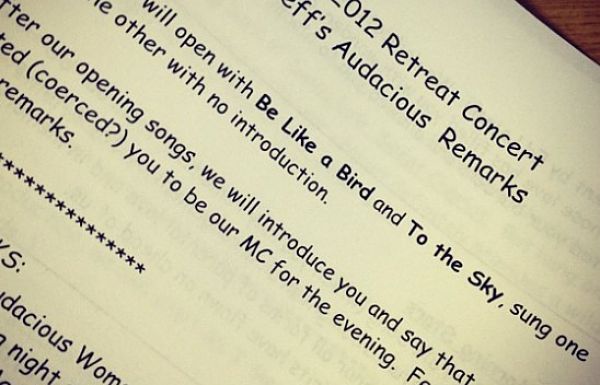How To Create Professional Business Documents
Last Updated on August 14, 2023 by Christian Ralph
You don’t get a second chance at first impressions, meaning it’s vitally important all your printed business documents are created to the correct corporate standards. Poor printer practices could compromise the professionalism of a business document and could undermine the purpose and target of a report, presentation or pitch. So to give you a helping hand, we have put together 30 helpful tips to ensure your business documents look their professional best.
1. Control the Fonts
Absolutely limit yourself to a maximum of three fonts in a document, fewer if possible.
2. 12 is Plenty
The 12 point font size is standard for printed documents. Any smaller and it can become hard to read, any larger and it starts to look like a sight chart.
3. Create Content Page
If your document is going to cover more than eight pages, it is prudent to create a content page.
4. Be Smart with Colour Use
Colour adds a professional touch to documents, and can help to highlight key areas. By smartly incorporating different colours, your document will be read more than a standard black and white page.
5. Check the CMYK
When you are chucking a little colour into the mix, just make sure it’s always the same tone to retain consistency. Check the CMYK or RGB codes to be doubly certain it’s the same tone.
6. Brand Consistency
Make sure the method in which you reference your brand is consistent throughout. No nicknames or unnecessary shortened versions.
7. Consistent Formatting
Don’t switch between numbers and bullet points – retain consistent formatting throughout to keep the message on track.
8. Chart Consistency
Don’t show off with all the different charts you can produce – sticking to the same style can make the results easier to read and conclusions easier to extrapolate.
9. Obvious Headings
Making sure your headings are consistent offers clarity to a document. Similarly, formatting sub-headings to be consistent can differentiate these from main headings.
10. Implement a Hierarchy
If you wish to use headings, secondary headings and tertiary headings – create a hierarchy so it is immediately obvious how significant the headings are in relation to the copy.
11. Minimise Use of Caps Lock
Shouting is not the tone of voice for the consummate professional.
12. Create Clarity with White Space
White spaces can make the rest of the document clearer and easier to read.
13. Avoid Large Sections of Text
Nothing puts off the average reader like an endless stream of text. Try to keep all of the copy concise and relevant.
14. Resist the Urge to Underline
You are not a primary school teacher and your words and wit should be able to underline the message for you.
15. Use Italics Instead
Much more professional.
16. Don’t Centre Large Block of Text
This is not a flyer for a rock festival.
17. Centre Quotes
However, giving quotes from authority sources centre stage is appropriate and professional.
18. Reference the Harvard Way
If you need to reference any sources, follow the Harvard System – an industry standard.
19. Get Rid of Comic Sans
The much maligned clown prince of the print world, Comic Sans (and all the other fonts better suited to children’s party invites) is best switched out for a classic, professional font like Arial or Century Gothic.
20. Avoid Widows and Orphans
Although the literal translation is a social faux-pas, avoiding Widows and Orphans on a professional document adds a pleasing aesthetic. A Widow is a line at the end of a paragraph made of fewer than seven characters, and an orphan is a line at the start of a new page with fewer than seven characters.
Try to format your document to avoid such occurances.
21. Don’t Mix Landscape and Portrait
Your readers won’t appreciate having to flip between the two layouts.
22. Minimise Borders
Superfluous artwork and borders can make the document look gimmicky. Keep the borders simple or (better yet) blank.
23. Use a Template
If you’re not confident about laying out a professional document, use a pre-designed template.
24. Avoid Unnecessary Images
Only implement images when absolutely necessary and relevant – avoid the temptation to place excessive images just for the sake of it.
25. Avoid Low GSM Papers
80gsm paper is more commonly used for internal memos and informal jobs. Aim for 90+ in the GSM race.
26. Stick to White Paper
Never be lured into thinking coloured paper stands out. It will make the document look like a selection of certificates or promotional flyers.
27. Use a High Quality Printer
Top quality printers with high-clarity inks or toners can ensure the tones are rich, deep and professional-looking.
28. Heed Ink/Toner Warnings
If you’ve tried to eke out the last drops of toner to finish with faded text over the last few pages, you’ll be compromising the appearance of the whole thing. Heed any warnings fired your way by the printer.
29. Seek a Sub-Editor
A second pair of eyes can help identify any mistakes, spelling errors, unattractive or confusing passages and generally butt-ugly bits.
30. Always Print Preview
Don’t commit to printing a 60 page professional document before it’s ready to go. Complete a print preview and an in-depth proof read, then you’re ready to go.
At Printerland, we stock a huge range of fantastic printers capable of helping you produce incredibly professional-looking business documents. For the full range, please visit our homepage or call us now on 0800 840 1992.
Image sourced via Flickr Creative Commons. Credit: Jeff Stevens.



Leave a Reply